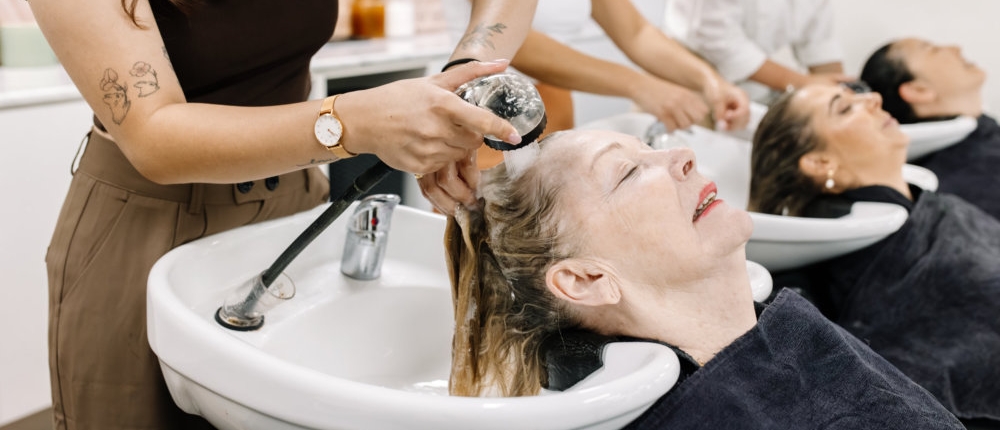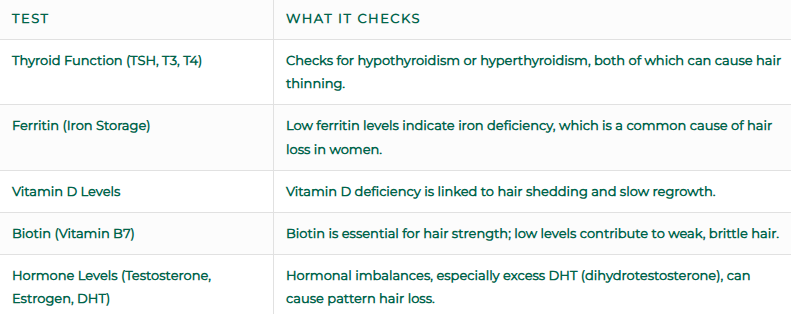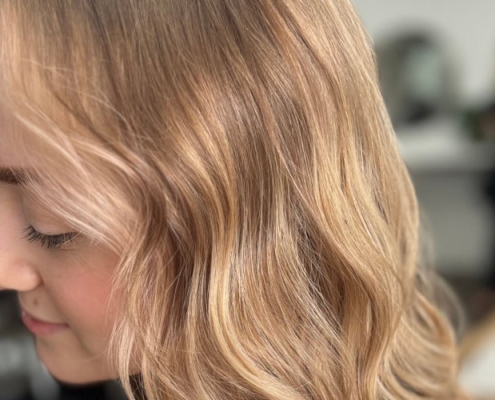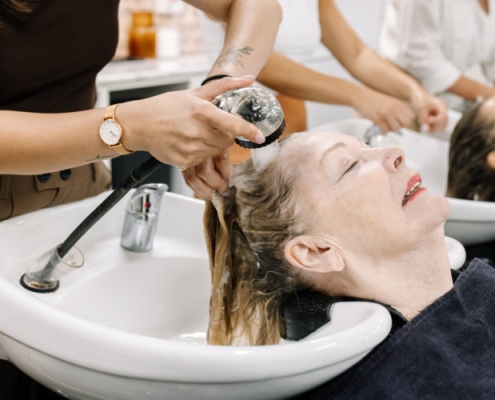Is It Time to See a Specialist for Your Thinning Hair?
Thinning hair can be distressing, especially when at-home remedies and over-the-counter products don’t seem to make a difference. While some hair loss is natural, persistent thinning, excessive shedding, or visible scalp exposure may be signs that it’s time to consult a specialist.
Seeking professional advice can help you identify the underlying cause of hair thinning and receive the right treatment before it worsens. In this guide, we’ll explore when to seek expert help, the types of specialists available, diagnostic tests, treatment options, and what to expect during a consultation.
When Should You See a Specialist?
While minor hair thinning can often be improved with dietary changes and the right haircut, some signs indicate the need for professional intervention.
Signs You Should See a Hair Specialist
- Excessive Shedding: If you notice clumps of hair falling out when brushing, showering, or waking up in the morning.
- Persistent Thinning for Over 6 Months: If hair continues to thin despite using strengthening treatments and volumizing products.
- Visible Scalp or Widening Part: If your part is becoming noticeably wider or more scalp is showing through your hair.
- Patchy or Sudden Hair Loss: If you experience bald patches, circular areas of missing hair, or sudden hair loss.
- Receding Hairline: If the hair around your temples or forehead is thinning.
- Scalp Discomfort: If you have itching, burning, redness, or inflammation along with hair thinning.
- Family History of Hair Loss: If hereditary hair loss runs in your family and you notice early signs of thinning.
- Hair Loss After Pregnancy or Medical Treatment: If you experience excessive hair shedding following childbirth, illness, or surgery.
Types of Specialists for Hair Thinning
There are different types of specialists who diagnose and treat hair thinning. The right one depends on your symptoms and underlying cause.
1. Trichologist (Hair and Scalp Specialist)
A trichologist specializes in **non-medical hair loss and scalp conditions**. They focus on factors like scalp health, diet, and lifestyle to determine the cause of hair thinning.
- What they treat: Hair breakage, scalp disorders, general hair thinning.
- Recommended for: Mild to moderate thinning, scalp irritation, hair damage.
2. Dermatologist (Skin, Scalp, and Hair Doctor)
A dermatologist is a medical doctor who specializes in **skin and scalp conditions**. They can prescribe medications, conduct scalp biopsies, and diagnose underlying medical causes of hair loss.
- What they treat: Androgenetic alopecia (pattern hair loss), autoimmune conditions, scalp infections, hormonal imbalances.
- Recommended for: Sudden or severe hair thinning, bald patches, scalp inflammation.
3. Endocrinologist (Hormone Specialist)
If your hair thinning is linked to hormonal imbalances such as thyroid disorders, polycystic ovary syndrome (PCOS), or menopause, an endocrinologist can run hormone tests and prescribe treatment.
- What they treat: Thyroid disorders, PCOS, post-menopausal hair thinning.
- Recommended for: Women experiencing hair loss due to hormone fluctuations.
4. Nutritionist or Dietitian
If your thinning hair is caused by nutrient deficiencies, a nutritionist or dietitian can help improve your diet and supplement deficiencies.
- What they treat: Iron, biotin, zinc, vitamin D, and protein deficiencies.
- Recommended for: Hair loss due to poor diet or malnutrition.
Diagnostic Tests for Thinning Hair
During your consultation, a specialist may perform several diagnostic tests to determine the underlying cause of your hair thinning. These tests help identify whether hair loss is due to genetics, hormonal imbalances, nutritional deficiencies, autoimmune conditions, or scalp disorders.
Getting a proper diagnosis is crucial because different types of hair thinning require different treatments. Below are the most common diagnostic tests used to assess thinning hair and scalp health.
1. Scalp Examination
A scalp examination is the first step in diagnosing hair thinning. The specialist will closely inspect your scalp and hair to look for signs that indicate the root cause of the issue.
What the Specialist Looks For:
- Hair Density: Determines whether the hair is uniformly thinning or if there are specific bald patches.
- Scalp Condition: Checks for dandruff, oil buildup, redness, inflammation, or scarring.
- Hair Shaft Strength: Examines the thickness, texture, and elasticity of individual hair strands.
- Hair Follicle Health: Determines if the follicles are producing new hair or if they have shrunk (miniaturization).
How It Helps:
A scalp examination provides a preliminary understanding of whether hair loss is due to genetics, stress, hormonal changes, or scalp conditions. If necessary, the specialist may proceed with more in-depth diagnostic tests.
2. Hair Pull Test
The hair pull test is a simple yet effective method to assess excessive hair shedding. This test helps determine if you are experiencing active hair loss and, if so, whether it falls under conditions like telogen effluvium, alopecia areata, or androgenetic alopecia.
How It’s Performed:
- The doctor gently pulls a small section of hair (approximately 40-60 strands) from different areas of the scalp.
- They count how many hairs come out easily without resistance.
Interpreting the Results:
- Normal Shedding: Losing 1-3 hairs per pull is considered normal.
- Excessive Shedding: If more than 10% (5-6 hairs) come out per pull, it suggests active hair loss due to stress, illness, or nutrient deficiency.
What Happens Next:
If the hair pull test indicates significant shedding, the doctor may recommend further tests such as blood tests, trichoscopy, or a scalp biopsy to identify the exact cause.
3. Trichoscopy (Digital Scalp Analysis)
Trichoscopy is an advanced diagnostic technique that provides a magnified view of the scalp and hair follicles. This test is particularly useful for identifying early-stage hair thinning that may not be visible to the naked eye.
How It’s Performed:
- A dermatoscope or digital microscope is used to examine the scalp at 20x to 100x magnification.
- Images of the hair follicles and scalp surface are analyzed for abnormalities.
What the Specialist Looks For:
- Hair Follicle Miniaturization: A key indicator of androgenetic alopecia (pattern hair loss).
- Inflammation or Redness: May suggest scalp psoriasis, seborrheic dermatitis, or alopecia areata.
- Broken or Fragile Hairs: May indicate hair shaft disorders, excessive heat styling, or chemical damage.
- Follicular Density: Measures how many follicles are actively growing hair.
How It Helps:
Trichoscopy allows for an accurate diagnosis without requiring an invasive procedure. If abnormalities are found, the doctor may recommend additional tests to confirm the condition.
4. Blood Tests
Blood tests help identify medical conditions and deficiencies that may be causing hair thinning. Many cases of hair loss are linked to hormonal imbalances, nutrient deficiencies, or autoimmune disorders.
Common Blood Tests for Hair Thinning:
What Happens Next:
If blood test results indicate a deficiency or hormone imbalance, the doctor may prescribe supplements, dietary changes, or medications to correct the issue.
5. Scalp Biopsy
A scalp biopsy is a minimally invasive procedure used to examine hair follicles under a microscope. It is typically performed if the doctor suspects autoimmune conditions like alopecia areata or scarring alopecia.
How It’s Performed:
- A small section of the scalp (typically 4mm) is numbed with a local anesthetic.
- The doctor removes a small piece of scalp tissue containing hair follicles.
- The sample is sent to a laboratory for microscopic analysis.
What It Detects:
- Alopecia Areata: An autoimmune disorder causing patchy hair loss.
- Scarring Alopecia: A condition where inflammation destroys hair follicles.
- Fungal Infections: Certain infections can lead to hair loss.
Final Thoughts
Diagnostic tests are essential for understanding the cause of hair thinning and determining the best treatment options. If you’re experiencing persistent hair loss, consult a specialist to undergo the necessary tests and start a personalized treatment plan.












